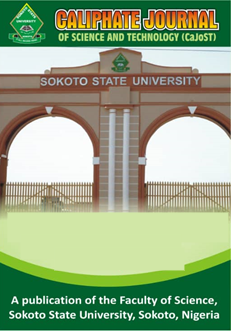Heavy Metals Tolerance and Antibiotic Susceptibility of Bacteria Isolated from Ashaka Solid Waste Disposal Site and Adjacent Source of Water
DOI:
https://doi.org/10.4314/7ctjeh24Abstract
Environment pollution is a major problem worldwide particularly that involving heavy metals (HMs) and pathogenic bacteria. The cement industry plays a role in discharging pollutant to the environment. This study was aimed at investigating the concentration of heavy metals in the soil from the Ashaka cement dump site and its adjacent water source, as well as to isolate, identify, and characterize heavy metal-tolerant bacteria from these samples. Furthermore, the study seeks to determine the antibiotic susceptibility patterns of the isolated bacteria and detect the presence of antibiotic-resistant genes, specifically blaNDM-1 and blaKPC. The study area is Ashaka cement factory in Funakaye local government area of Gombe state, Nigeria. Soil and water samples were collected from the dump site and adjacent water source for analysis. Heavy metals concentration was determined using Atomic Absorption Spectrophotometry after digestion with nitric acid. Bacteria were isolated and purified using nutrient agar incorporated with heavy metals. Biochemical tests, including catalase, indole, citrate utilization, urease, MR, VR, H2S production and molecular confirmation were carried out for bacterial identification. The heavy metals concentration in the soil and water samples revealed significant variations from recommended limits, indicating potential environmental pollution ranging from the sites zinc (SiteA1=0.728, Site A2=0.458, Site A3=0.187), mercury (Site A1=0.728, SiteA2=0.746, Site A3=0.746), lead (Site A1=0.207, Site A2=0.215, Site A3=0.627), Manganese (Site A1=16.11, Site A2=0.523, SiteA3=0.495) and chromium (SiteA1=0.685, Site A2=1l.06, Site A3=1.48). Escherichia coli, Klebsiella pneumoniae, Enterobacter sp., Bacillus sp., and Pseudomonas sp. were identified at the different heavy metal concentration. Antibiotic susceptibility testing showed diverse resistance profiles among the isolates. The findings suggest that Ashaka cement dump site is a potential source of environmental contamination with heavy metals. The isolated bacteria exhibit varied heavy metal tolerance and antibiotic resistance patterns, emphasizing the need for proper waste management.

